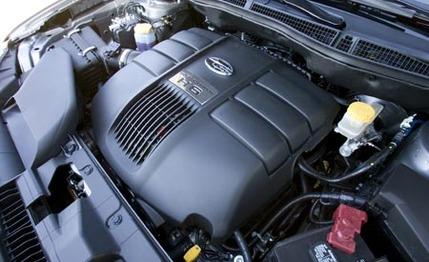
 First Drive Review
First Drive Review
Although the availability of a "real" SUV in the form of the B9 Tribeca bumped overall Subaru sales past the 200,000-unit mark in 2006, sales of the controversially styled mid-size SUV were considered mediocre. In response, Subaru has brought out a hastily revised version. The new Tribeca (thankfully, the confusing B9 prefix has been dropped for the 2008 model) features fairly comprehensive front and rear styling revisions, replacing the controversial Alfa Romeo-like cues with more conventional treatments that more closely resemble the Chrysler Pacifica, particularly with the badge set within a band of chrome atop the grille. Perhaps Subaru should have called it the Chry-beca.
Better, however, is the charming flat-six powerplant, which has been boosted in capacity from 3.0 liters to 3.6 liters in the interests of improved performance and economy, with horsepower and torque bumps to match.
Here's where it gets interesting
The flat-six engine (or H6, as Subaru calls it) is already a tight fit in the Tribeca's engine bay. Since the H6 is a horizontally opposed layout, any significant increase in crankshaft stroke would result in increases in engine-block deck-height that would make the engine too wide to fit in the existing structure.
The problem was exacerbated by typically thrifty computer-aided engine design, which left minimal space between the engine's cylinder bores. Subaru calculated that it could safely increase the bore size from 89.2mm to 92.0mm, but that change would have bumped the displacement to only 3191cc. Subaru needed more than that for the performance improvements it was seeking, so it came up with a novel way of increasing piston stroke without raising the cylinder deck height. The answer was an asymmetrical connecting-rod design (which looks somewhat like a lamb chop) that permits the piston to travel farther downward into the crankcase and increases the effective stroke from 80mm to 91mm.
Increasing both bore and stroke has resulted in the 3.6-liter displacement figure, a growth of 0.6 liter, with substantial gains in power and torque. The new engine produces 256 horsepower at 6000 rpm versus 250 at 6600 in the previous engine. Better, however, is the torque peak of at 247 pound-feet at 4400 rpm versus 219 at 4200, and about 180 pound-feet are now available at engine speeds as low as 1200 rpm.